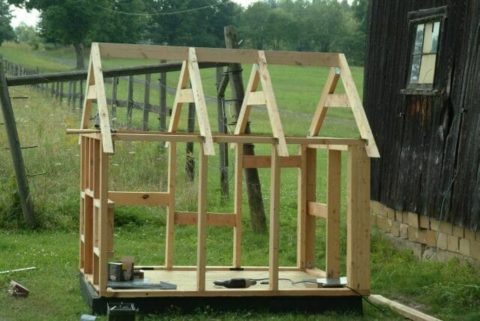Building a dog house is a fun and practical project for an amateur woodworker. With care and creativity, it can be a project you will be proud to show friends and neighbors. Although a dog house can be made out of pallets or spare sheets of old wood, you can make it look really nice with added trim or scrollwork and a bright coat of paint.
Start by knowing the size of the house your dog needs. Larger dogs need plenty of room. If your dog may have puppies in the dog house, even more room will be needed.
A peaked roof is traditional but you may want a lean-to roof. Some slant is needed for rain run-off. Don’t slant the roof toward the front or there will be a mud puddle at the door of the dog house.
If your ground tends to be muddy, you might build the dog house on a pallet so that the floor of the dog house is always up off the wet ground.
Once you have determined the dimensions of the floor and height that is appropriate for your dog, you will need a set of plans.
An A-Frame Dog House
Visit care.com for some awesome ideas and 20 free dog house plans.
There is a video on the website that shows a simple A-frame dog house. In the video, you will see the dog house being de-constructed and then constructed. With this, you can clearly see in your mind’s eye how the dog house goes together. What’s more, this design can be used for any size dog. A large dog may need a taller door opening.
The Traditional Dog House
Plan #5 on the care.com page is the traditional dog house which will require some basic woodworking skills. Finding the best miter saw will make your project much easier and at RemoveAndReplace.com you can also find the full list of materials you may need.
Scroll down further on the RemoveAndReplace.com page and you will find the layout for cutting the parts of the traditional dog house. Use these dimensions only if they fit your preliminary figures for the size needed for your dog. Otherwise, use two sheets of plywood and enlarge the dimensions.
Instructions for assembling and an exploded view of the traditional dog house are also on the page.
Roof Materials and Overhang
Give the roof a good weather barrier. Over the plywood, add a layer of tar paper and a layer of shingles. Or use corrugated metal. Sometimes a hardware store will cut the metal to the dimensions you need.

A roof overhang will help keep rain and snow out of the interior of the dog house. To create an overhang, cut the roof pieces several inches wider then the dog house is deep, front to back. An overhang on the sides also looks nice. Add a few inches to the roof pieces than the distance from the peak down to the side of the main box.
Doggy House Accessories
Every woodworking project is more fun if you add your personal touch.
Use your miter saw to cut out the shape of a big dog bone to nail over the door. If you want to give your dog house a house number, cut them out at the same time. Paint your dog’s name on the dog bone or paint the house numbers and glue them to the dog bone.
If you want to provide a place where your dog can lie down and rest outside without being in the dirt, you can add a porch to the dog house. The porch can have a roof or not. Either way, your dog may prefer to rest outside his dog house on hot nights.
An Overview of the Steps to Build the Traditional Dog House
A more detailed description will be found on the pages that are listed to above.
* On the plywood, draw the layout of the sides, roof, and base
* Cut out the pieces with a circular or chop saw
* Cut a door opening in the front piece
* Cut the 2×4’s for the platform and assemble the platform
* On your table saw, rip 2×4’s into 2×2’s and cut lengths that will be used as corner braces
* Fasten the main box of the dog house together using the corner braces
* Attach the main box to the platform
* Add the roof pieces to the main box using corner braces
* Add roofing material
* Add trim
* Paint the dog house
* Add accessories, such as a plaque with the dog’s name (optional)
Building a dog house is a great project for an amateur woodworker. Customizing it to fit your dog and painting it to match your own house can be fun and practical – and something you will be proud to show to neighbors and friends.
Guest blog by James Niehaus from Perfectcutsandmiters.com
